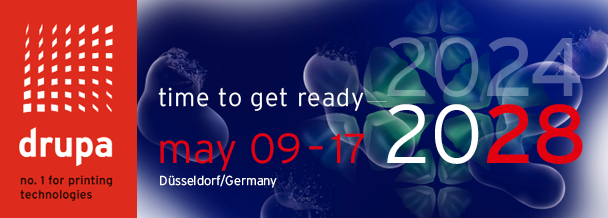Automation-driven productivity
As turnaround times continue to tighten, device uptime will be a major determinant of success in production print during 2024. The value of workflows that flow without fail is becoming more important. Reliable technology, remote maintenance, and streamlined software solutions that facilitate end-to-end workflows will be just some of the productivity-related trending topics during the next 12 months.
Key to automation is reliable technology that works when you need it most. With unrivalled reliability, Kyocera’s inkjet portfolio, with 95%+ uptime, is ready to help businesses elevate productivity by leveraging the following features:
- A variety of software solutions at the pre-press side, along with a choice between front-end systems gives the customer a multitude of options to streamline the document workflow from end to end.
- Remote servicing means troubleshooting can be carried out remotely in real time, reducing technician site visits.
- Kyocera’s TASKalfa Pro devices can be connected to a variety of in-line finishing partner solutions that facilitate end-to-end automation and production flow efficiency.
- Few moving parts and less wear because of the lack of friction minimise the risk of production interruptions, thus optimising uptime.
- The options to add feeding and stacking units to Kyocera devices enhance the timeframe for unattended printing and offer flexibility in changing media types while producing. This enables the operator to prepare the engine for the next job, while the current job is still running.
Staying true to the mantra "prevention is the best form of cure," Kyocera's robust inkjet production printers have been built to thrive in the most demanding work environments where both quality and quantity are paramount.
It is precisely this reliability that enables workflow automation across media types, facilitating priceless versatility when it comes to meeting the changing needs of customers.
TCO/ROI-focused decisions
With running costs rising, the margins are tightening across the board. The cost
of inefficient technologies will become increasingly evident during the year ahead – as will the huge benefits to be had with cost-effective inkjet production printers. With the cost of doing business rising, the pressure on companies to seek new ways of reducing expenses is following suit.
Contrary to the long-held belief that reducing investments in new tools is the surest way of saving money, the reality of the past couple of years has told us a different story: sticking with unreliable or inefficient technology is by far the more expensive play in the long run. Users of Kyocera’s TASKalfa Pro 15000c, for example, have already seen the huge potential of inkjet, both in terms of driving productivity and keeping running costs under control.
Finally, the year ahead will further underline the fact that total cost of ownership (TCO) and return on investment (ROI) are finely intertwined. A low purchase price, however, does not guarantee a low total cost of ownership over the life cycle of a device, nor a strong return on investment. TCO provides an overview of the total expenses that a printer will accumulate throughout its lifecycle – this is the true figure that allows us to calculate the return on investment of a production printer. When taken alone, a product’s acquisition price only tells part of the story: the start. With its cutting-edge yet affordable technology, Kyocera’s inkjet portfolio proves that it’s possible to minimise running costs (for an appealing low TCO) while expanding business capacities (for a short ROI).
Driven by long-lasting technology that enables businesses to do more with less, Kyocera is ready to work with even more businesses in 2024 and beyond, to help them optimise productivity and cost savings.




